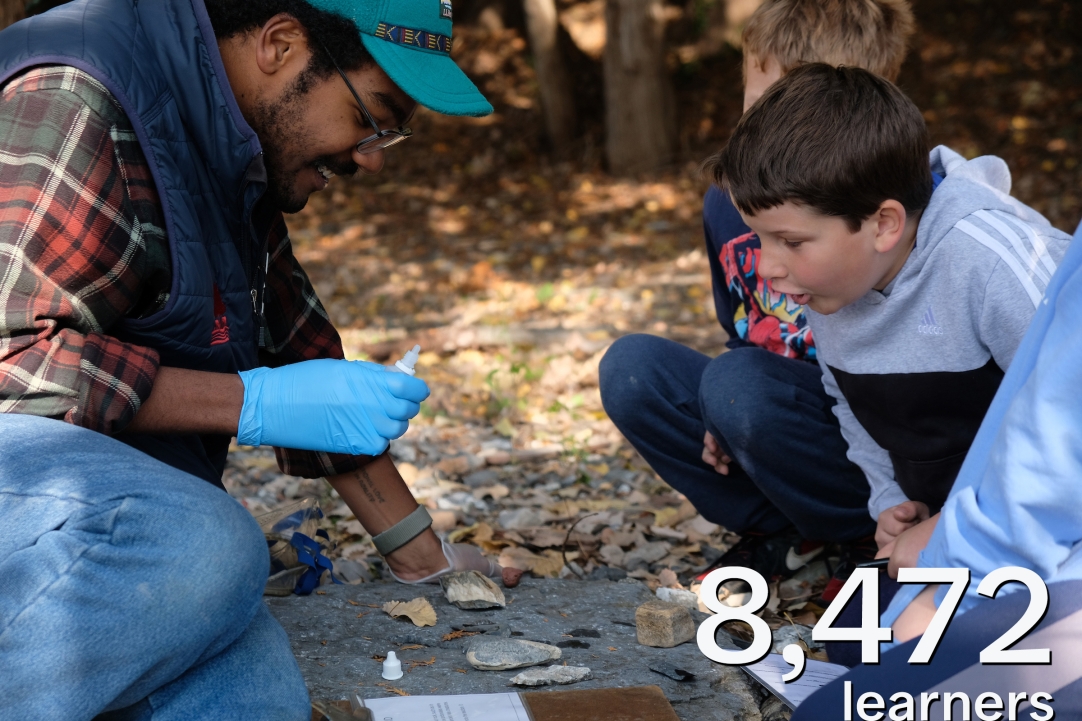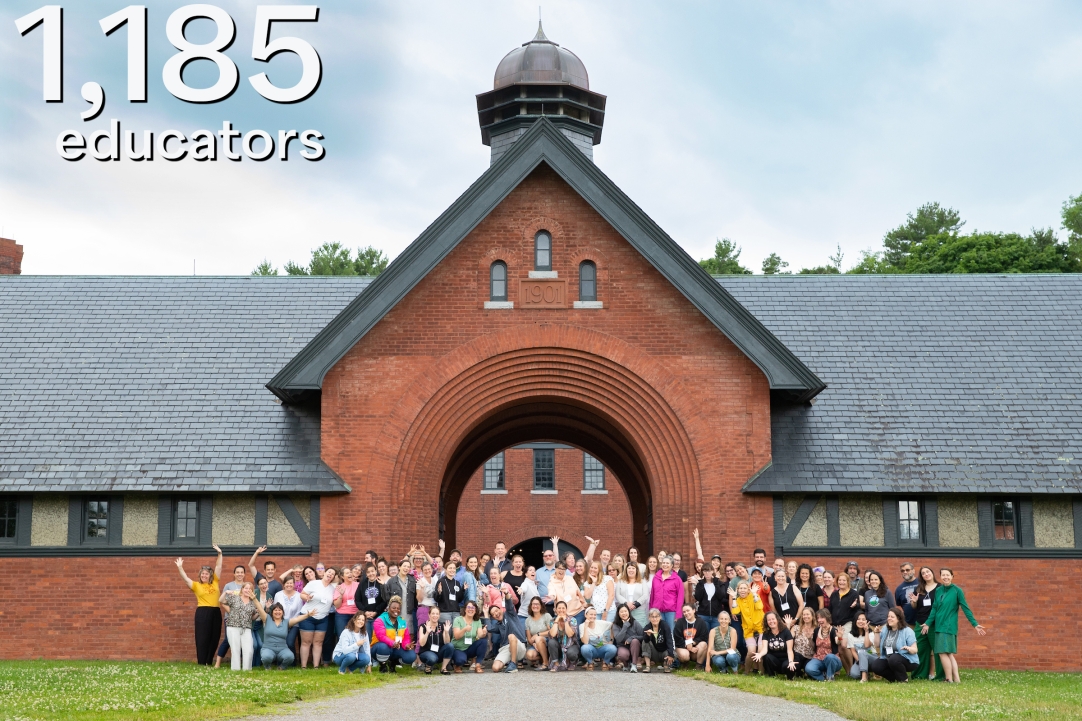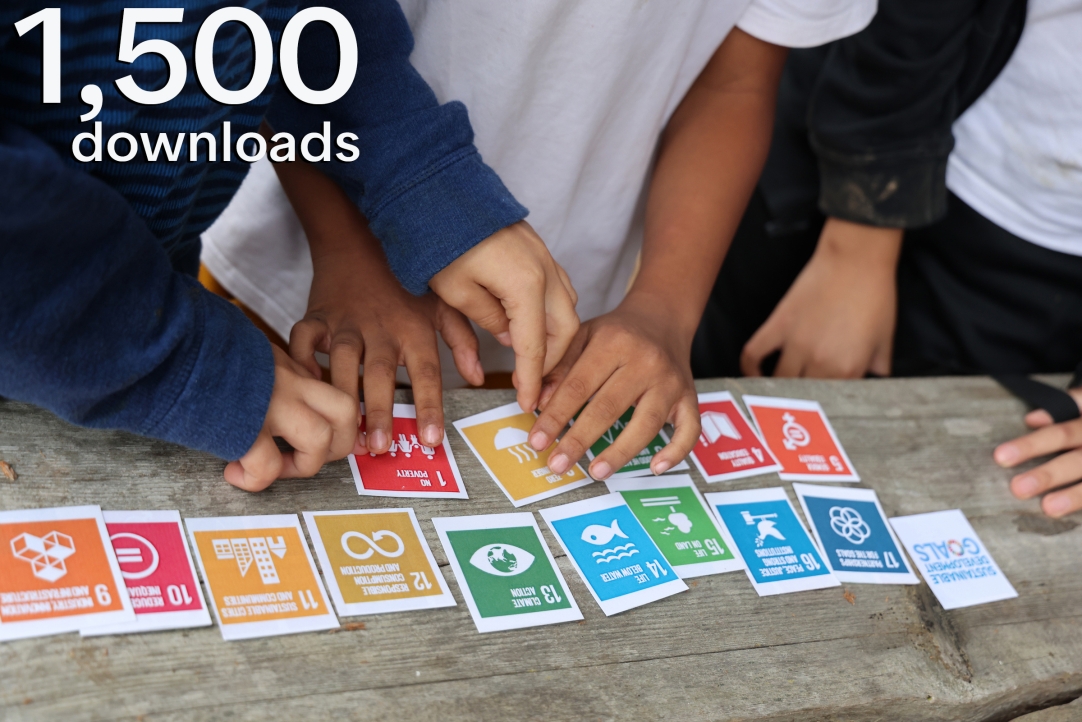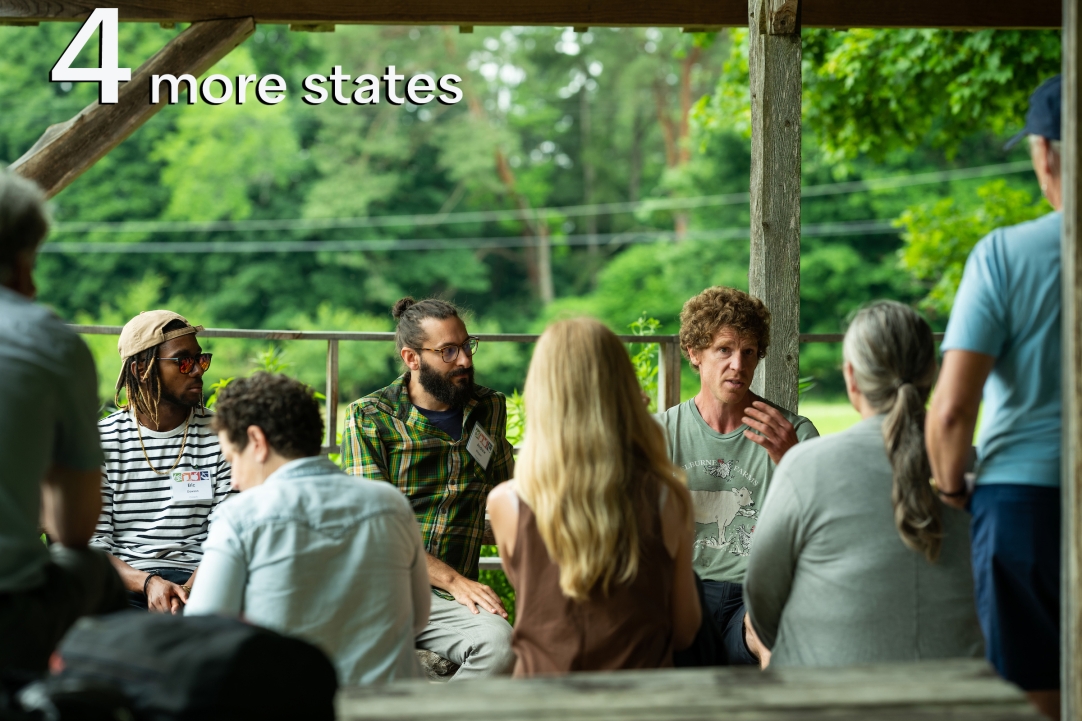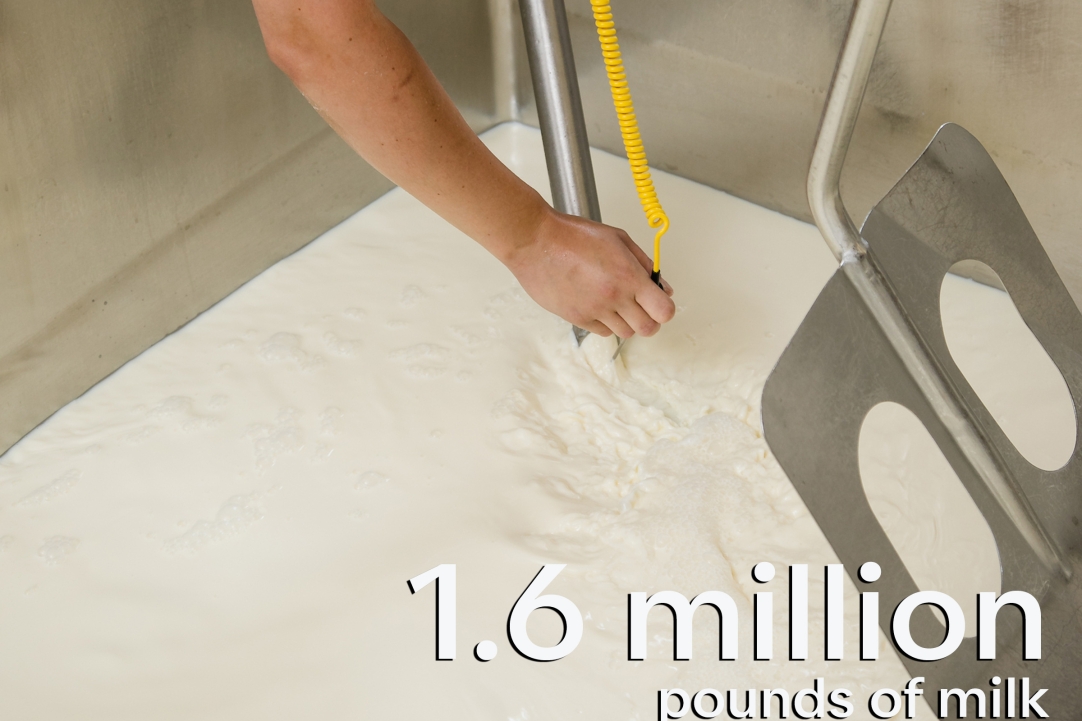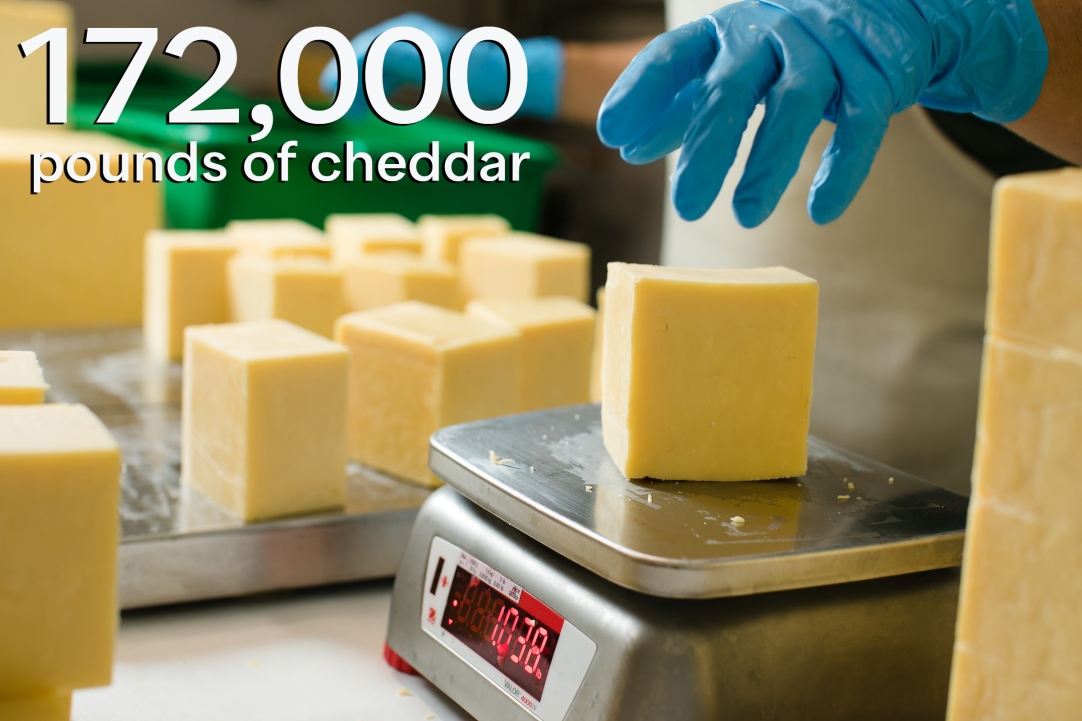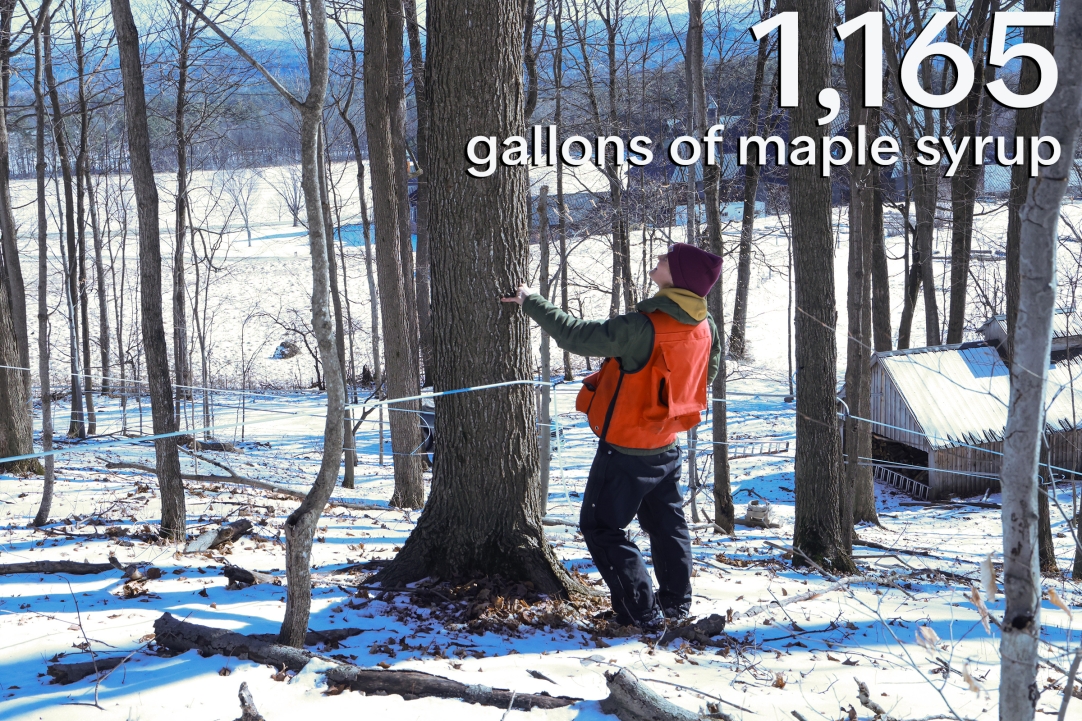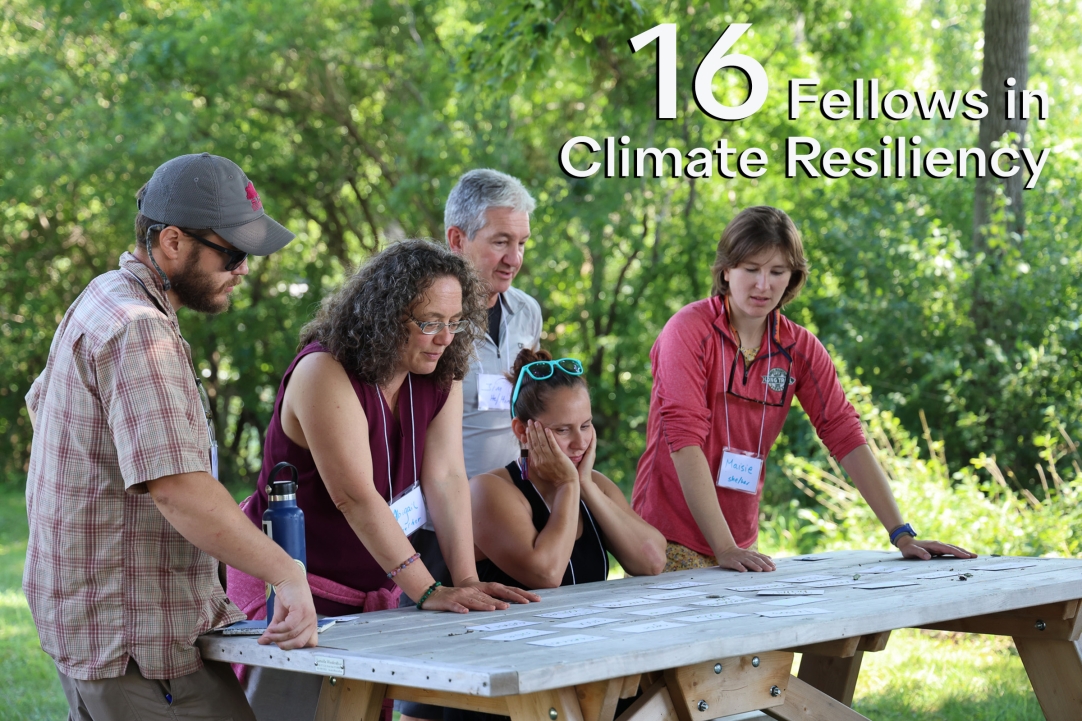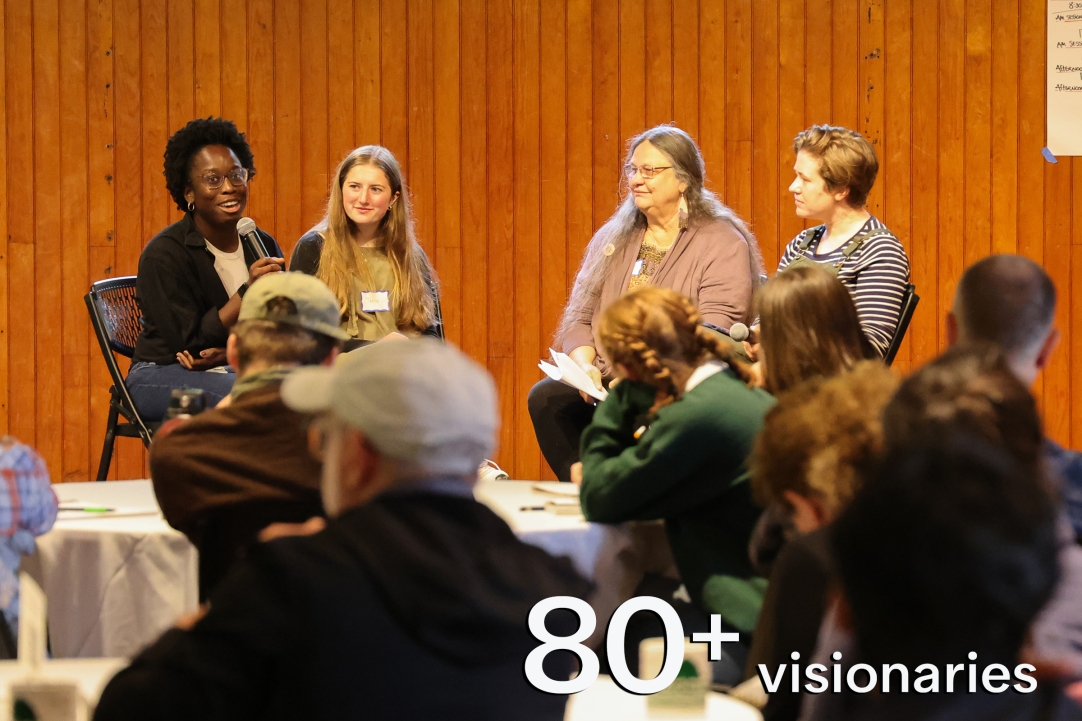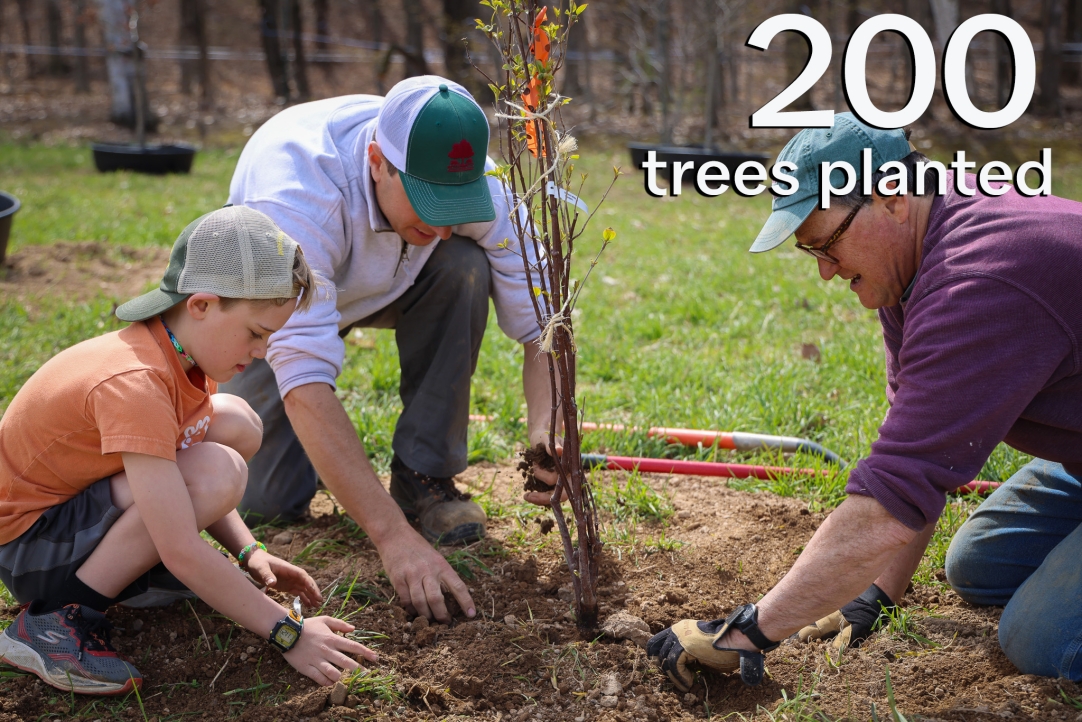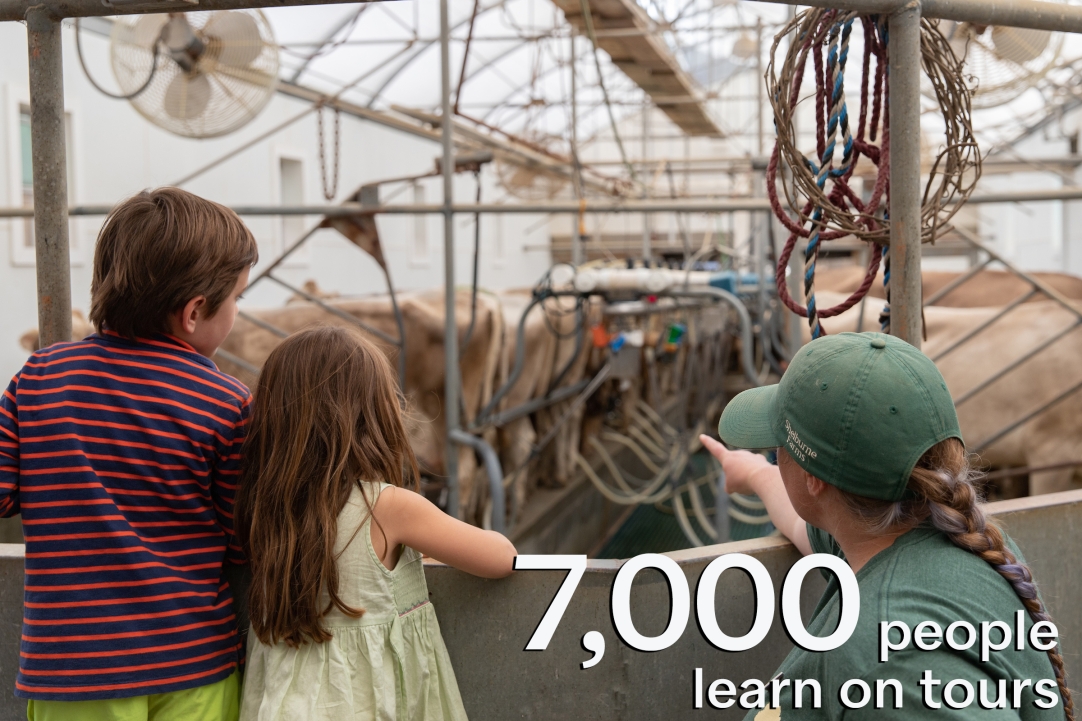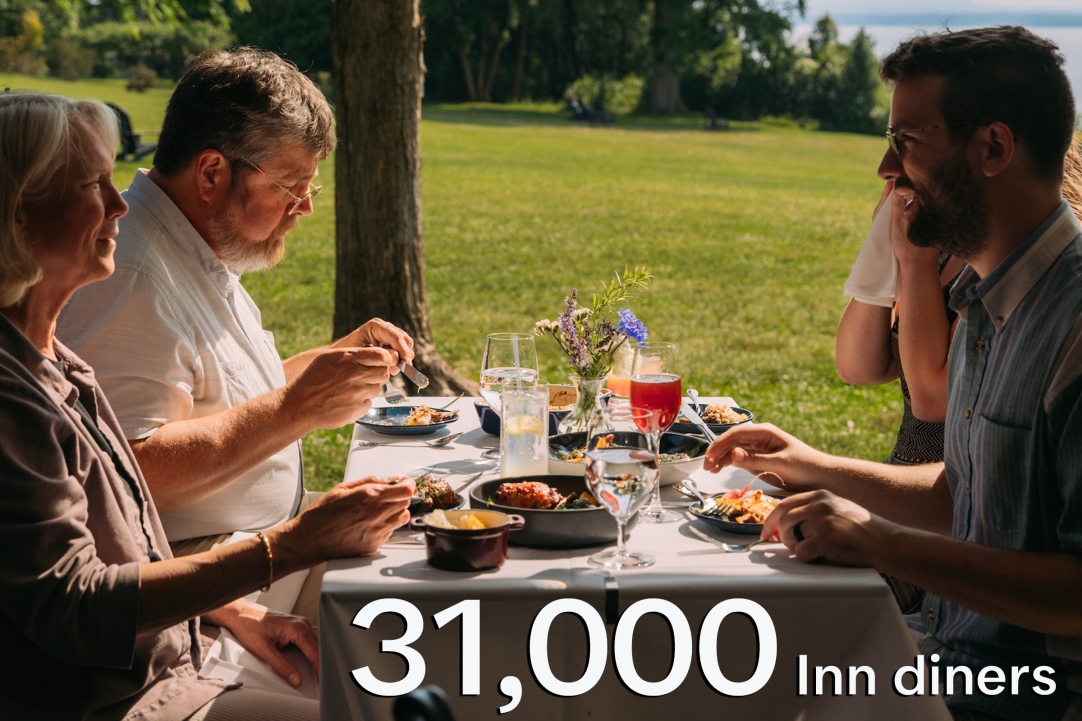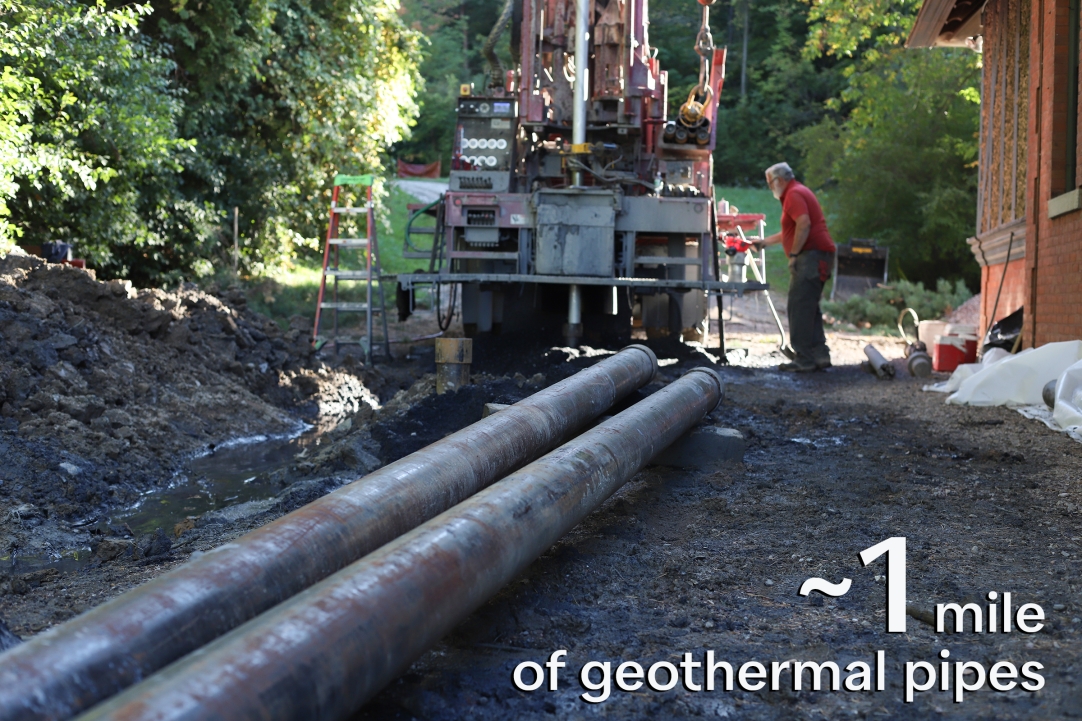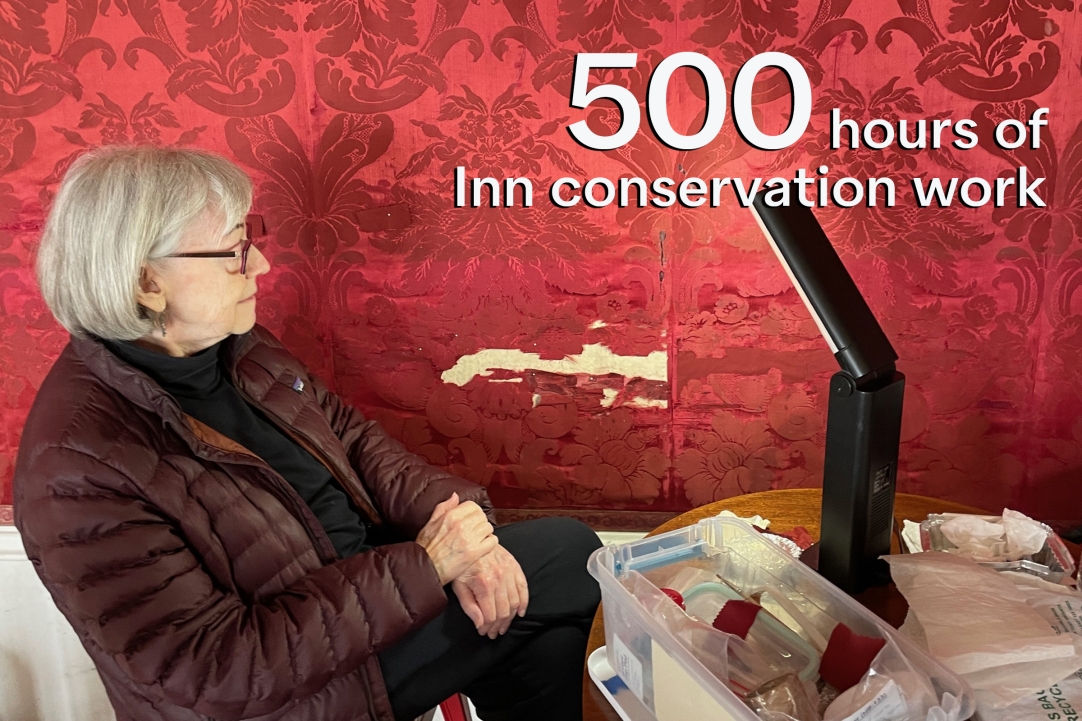There is not a day that goes by between the land and people where magic does not happen at Shelburne Farms. When you step onto land at the Farm you immediately realize the real reason why we belong to this planet and why we bear the primary responsibility of taking care of it.
2024 By the Numbers
"How do you measure, measure a year?" sings the cast in the hit musical Rent.
It's a great question.
Some of our most important successes and impacts in 2024 can't be measured by traditional yardsticks: thousands of learner "a-ha!" moments, food systems strengthened, schools changed, experiences of restoration and renewal. Still, the numbers here give you a sense of the scale and scope of all that you made possible in the "five hundred twenty-five thousand, six hundred minutes" of 2024.
We hope you enjoy this review. Don't forget to scroll through the slideshows.
Education Programs
- Through every season, 8,472 learners of all ages spent time with the farm learning about their relationships to farming, the earth, and one another, with lots of fun along that journey. On their particular journey to learn about preparing locally grown meals, members of the Jr Iron Chef team, coached by our chefs, made 500 pierogies!
- 1,185 educators from 24 states and four countries came through our many programs that support education for sustainability. Consider the ripple effect: Each teacher will reach 50,000+ students in their career. Some of those educators joined the first graduating class of the Education for Sustainability Graduate Certificate, offered with the University of Vermont. This group completed several years of coursework to deepen their expertise in bringing sustainability to life for learners.
- Our resources were downloaded more than 1,500 times by educators around the globe, from Nicaragua to Beijing. This included a new guide advancing the UN’s 17 Sustainable Development Goals, Learning Locally, Transforming Globally. More
- Four more states joined our community of Farm to School Institute adapters in 2024 (Arizona, North Carolina, Missouri, and New Jersey), taking this proven model for change across the country. To date, 18 states have launched their own institutes with our support.
Working Farm and Landscape
- Our cheesemakers crafted nearly 172,000 pounds of cheddar from more than 1.6 million pounds of milk generated by 119 Brown Swiss Cows. Imagine those 1-lb blocks forming a “yellow brick road” 3-½ feet wide and more than ¾ mile long!
- Half of the produce in our Market Garden supported our community in the Farm Store, another third was served at our farm-to-table restaurant, and nearly 10% was donated. Produce ranged from cucumbers (more than 3,000 lbs!) to beans (nearly 1,000 lbs), to eggs (3,805 cartons, or 45,660 eggs!).
- We made 1,165 gallons of maple syrup or 97% of a "full crop.” That’s when each of our 2,600 taps yields 0.5 gallons of maple syrup.
Climate Action
- 16 educators joined the Shelburne Farms Climate Resiliency Fellowship program, deepening their expertise in teaching about climate change and solutions. More.
- 80+ visionaries in both climate education and in biochar gathered on separate occasions at the farm to build collective learning and accelerate impact to slow climate change. Educators, youth, and nonprofit leaders are part of the Northeast Climate Change Education Collaborative, a collective of 110+ organizations. More. The biochar meeting was a first-of-its-kind gathering of professionals from state and federal agencies, nonprofits, farms, and businesses, exploring how biochar might restore degraded soils, enrich agriculture, and sequester carbon.
- 200+ trees (26 native species) were planted on 3.5 acres of field to establish Marshall Woods, a small but symbolically important piece of our goal to achieve Net Zero on the farm by 2028.
Visitors
- More than 100,000 visitors explored this beautiful landscape on our walking trails. We also engaged more than 7,000 learners in tours of our working farm, and over 31,000 diners enjoyed a farm-to-table meal at the Inn, meals that showcased products from our own farm, and from 47 other Vermont producers. We gave visitors 330 opportunities to hand milk a Brown Swiss Cow in the Children’s Farmyard! Maybe you were one of them?
Buildings
- Nearly a mile of pipes and casings support the Coach Barn’s new geothermal energy system that will help make the fully renovated building climate neutral. Each day, 15-25 craftspeople–a shifting team of carpenters, masons, electricians, plumbers, and more–have worked on site to bring new life to this historic structure. The restored chimney alone contains 5,800 bricks.
- 9 conservators and craftspeople spent 500 hours on a variety of preservation and conservation projects to protect and preserve the historic fabric of the Shelburne Farms Inn for future generations.
You!
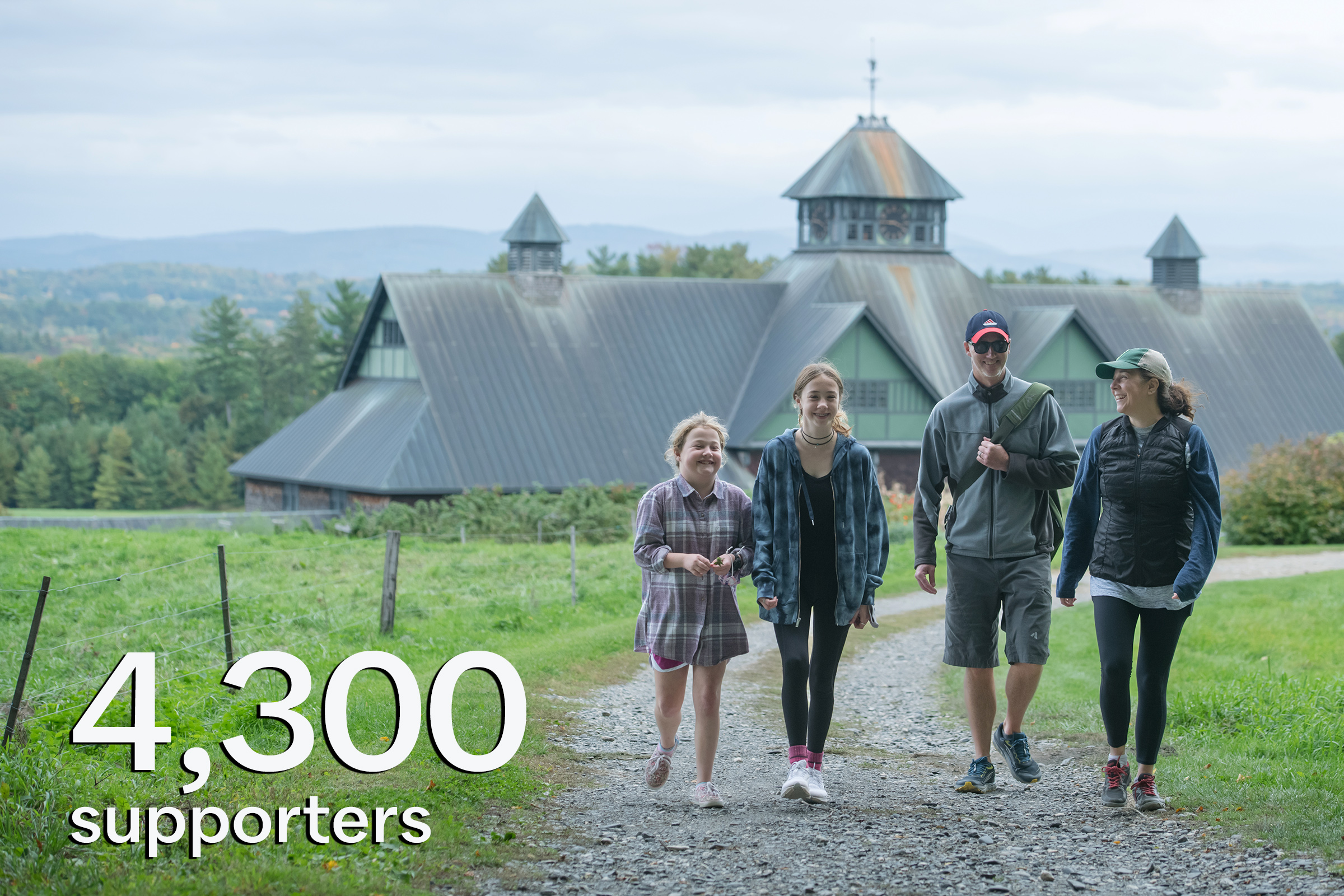
Nearly 4,300 individuals and foundations supported Shelburne Farms in 2024. This includes support for the Campaign for Shelburne Farms that helped launch the Institute for Sustainable Schools and begin the rehabilitation of the Coach Barn. Campaign funds allowed us to complete work on the formal gardens and build the Storrs kitchen at the Inn, and move forward with the Windmill Hill conservation project, in addition to increasing our endowment and more! It's the support of friends of Shelburne Farms that makes everything we do possible. Thank you!
